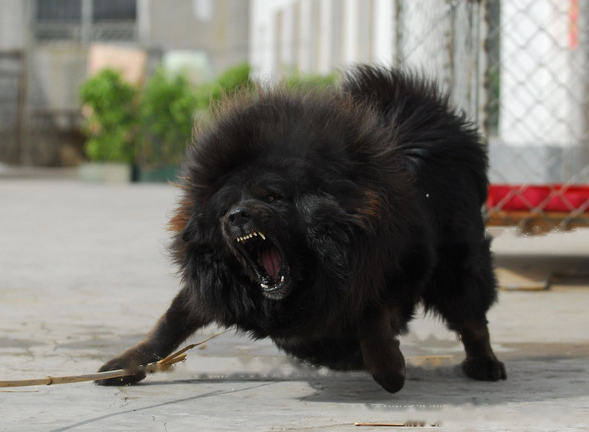Tibetan Mastiffs are fierce by nature, they will only obey one master, but once training fails, they will cause a lot of trouble.

Training principles
? step by step
The training of any kind of dog must follow the principle of step by step, especially the training of Tibetan mastiffs .
Because the Tibetan Mastiff is not easy to receive training and the establishment of conditioned reflex is slow, it must be gradually improved in the training process, and cannot be rushed.
Two according to the dog's conditions
According to the different Tibetan Mastiff's own personality, quality characteristics and nerve types, in the training direction, training subject selection and training progress, it should be adjusted according to the dog's conditions, treated separately.
Dogs with different types and behavioral responses should be treated separately, and there are the following categories: Excited, Lively, Quiet, Mixed, Passive Defense Strong, Active Defense Strong, Food Strong reflection type, strong search response type.
In the actual training process of Tibetan mastiffs, Tibetan mastiffs are classified into three types: mixed type, strong active defense type, and strong food reflex type.
Three consolidation and improvement
Because the Tibetan Mastiff builds conditioned reflexes slowly during training and is easy to fade. Therefore, in the training, it is necessary to continuously consolidate the Tibetan Mastiff's formed ability, and on the basis of the consolidation, increase the content and difficulty of the training.
Consolidation refers to strengthening the stability of the Tibetan Mastiff's ability and the solidity of the foundation, and improvement refers to new development and breakthroughs on the original basis.
But it should be noted that the improvement is limited and cannot exceed the limit of the Tibetan Mastiff's own physiological activities.
END
Difficulty and skills of training Tibetan mastiffs to bite
? A Tibetan mastiff does not have a strong desire to bite.
Due to the main The character trait is ferocity, and it is easy to have hatred for people or objects, which is an advantage in training.
However, the Tibetan Mastiff is not very possessive of objects, so the desire to take possession is not strong, which is a disadvantage in training.
In actual training, training techniques that use strengths to overcome weaknesses should be used. Use the Tibetan Mastiff's hatred of objects to cultivate and train its possessiveness.
The conditioned reflex of the second Tibetan mastiff is slow in training
It may be due to the loyal and simple nature of the Tibetan mastiff, which fully displays the characteristics of one tendon in training, which is also an obstacle Difficulties in the training process.
In order to overcome this difficulty, the training technique of starting early is stronger should be adopted, that is, the training of Tibetan Mastiff puppies should be carried out in advance, and all aspects of the ability should be cultivated from the puppy period.
Tibetan Mastiff can withstand super stimulation during training
Tibetan Mastiff can withstand greater mechanical stimulation than other dog breeds, so whether it is Tibetan Mastiff puppy training , Obedience subject training, or biting subject training, must be subject to high-intensity stimulation. Otherwise, it will be difficult for the dog handler to control the Tibetan Mastiff.
Fourth how to use Tibetan mastiffs with strong hatred and active defense to carry out training
1. Cultivate Tibetan mastiffs' hatred and active defenses
The original Tibetan mastiff The living environment has cultivated the ferocious characteristics of the Tibetan Mastiff, but due to the current large-scale artificial breeding, they have coexisted with human life for a long time, which has reduced its inherent ferociousness. Used as a bite, hunt, and guard dog, its ferocity must be restored.
2. Practical biting training
Because the Tibetan Mastiff is naturally bold, it is not necessary to deliberately train in the sound and complex environment during the bite. The training of Tibetan mastiffs and multi-headed dogs to hunt together should be strengthened, which is the need of actual combat.
![[Dog Training 5] The training method of pet dog dining etiquette](/static/img/12192/12192_1.jpg)




